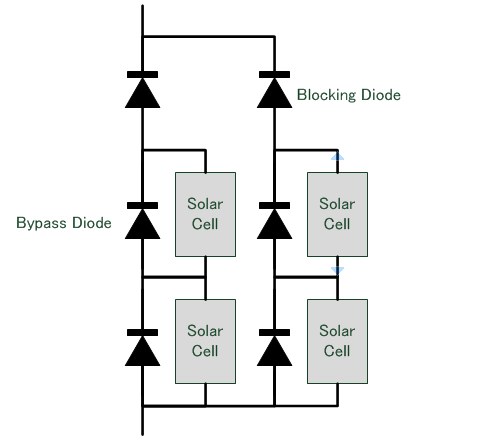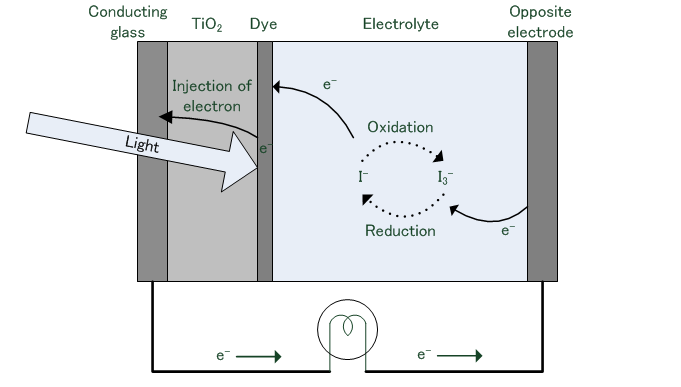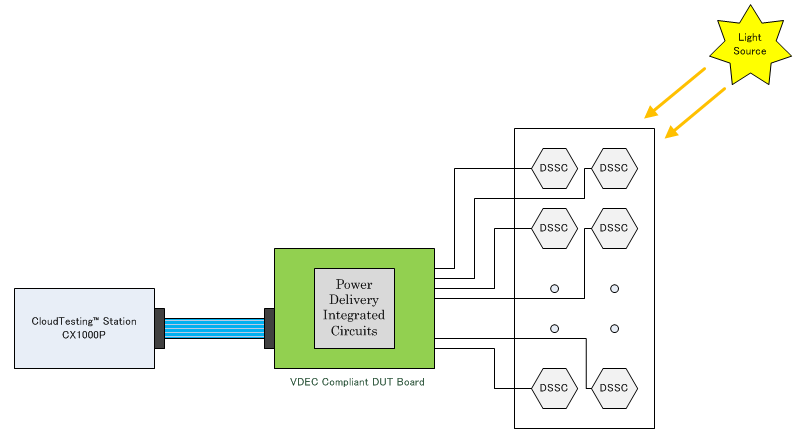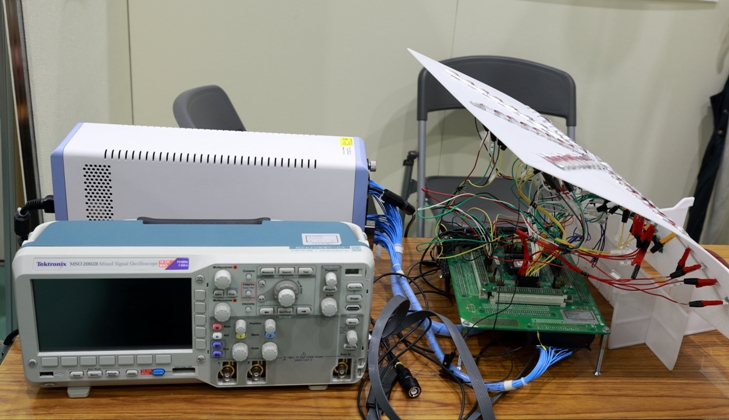Power delivery IC research with CloudTesting™ Service
The results of the research paper submitted by Professor Miyamoto, Chubu University, and his group was chosen to be presented at the International Conference on Solid State Devices and Materials, a famous academic conference for semiconductor and materials. Professor Miyamoto has used CloudTesting™ Service for this research. Cloud Testing Service interviewed him regarding this and his achievements while using CloudTesting™ Service.
Outline of a research
Cloud Testing Service (CTS) :
The title of your paper is “Field Test of Dye-Sensitized Solar Cells (DSSC) by Utilizing Power Delivery CMOS Integrated Circuits”. Could you please tell us the outline of your research?
Professor Miyamoto: On the commonly used solar panel, blocking diodes and bypass diodes are used to prevent the effects of a defective solar cell and dispersion of its output. Due to the effect of those diodes, the power efficiency collection of such solar panel is impaired.

Figure 1. Block diagram of common solar panel
Therefore, we developed technology to drastically improve the efficiency of power collection by LSI and then verified its effectiveness in the field. In our research we call this LSI, Power Delivery Integrated Circuits (PDIC).
We also used Dye-Sensitized Solar Cells (DSSC) instead of silicon solar cells, which are commonly used.

Figure 2. Operating principle of Dye-Sensitized Solar Cells (Grätzel, 2003, p.146, Fig.1)
Comparing to silicon solar cell, Dye-Sensitized Solar Cells have the benefit of low manufacturing cost and theoretically high efficiency. However, it has the disadvantage of significant cell dispersion and a complicated cell process serial connection. Therefore, I think the structure that optimizes the power generation capability of each cell by connecting the cells in parallel is most effective.
Most of the research for DSSC is conducted in the laboratory. There, a solar simulator is used as the alternative to actual solar rays. Unfortunately, the light coverage of the solar simulator is limited, so only one cell can be lit at a time. Therefore, it is not possible to evaluate their interrelated influence by connecting multiple cells at once. Additionally, it is imperative to evaluate the cells in all types of weather conditions. Until now, there has been limited access to verify DSSC in the field. The results of this research are very valuable because of the length of time we evaluated DSSC in the field.
What is Power Delivery Integrated Circuits
CTS: Could you tell us more about the developed LSI?
Professor Miyamoto: This LSI connects 64 DSSC cells in parallel, comparing the output voltage of each cell with the reference voltage (Vref) to collect the power from only the cells which are outputting voltage higher than Vref. We manufactured this device at the VLSI Design & Education Center(VDEC).
As previously mentioned, output voltage of each cell depends on the characteristic of the cell and its operating environment (i.e. cells in the sun will output higher voltage than the cells in the shade). LSI instructs target cells to collect power by varying the Vref to find the most efficient Vref value by analyzing its relation to total output power.
Each pin connected to a cell has a memory contained in the cell output status and logs if it’s a higher voltage than Vref. Therefore, it is very easy to record each cell’s output voltage in specific weather conditions by manipulating the Vref memory data.
Why did you choose CloudTesting™ Service
CTS: Could you tell us why you chose CloudTesting™ Service?
Professor Miyamoto: I learned early on about CTS. When I started the development of LSI and I had to prepare an evaluation environment, I compared it with other instruments. My conclusion was that a fully integrated CTS system is more convenient than combining several instruments, such as pulse generator, power supply and multi-meter.
If I have to combine instruments to setup the same evaluation environment, I not only have to develop the measurement control system but also purchase several instruments. This would make it difficult to ascertain if the root cause of the setup failure is due to mis-wiring or mis-configuration. Measurement results can differ after I dismantling and rebuilding the setup. Fortunately, there is no such concern with CTS. It is easy to restore the measurement environment as all instruments are integrated into single, transportable box.
The other benefit of CTS is its compactness. The footprint of CTS is very small, so it is very practical to conduct tests in the field.
Role of CloudTesting™ Service
CTS: Which CloudTesting™ Service was carried out for this research?
Professor Miyamoto: The CloudTesting™ Station was connected with DSSC and LSI (PDIC) as in Figure 3.
The developed LSI is mounted on the VDEC compliant 160 pin DUT board and DSSC cells are connected via this DUT board.
The CloudTesting™ Station was used to provide the clock signal to the LSI, supplying power and Vref. It read the memory that showed the status of each cell and measured the V-I characteristics.
 Figure 3. Schematic of measurement environment
Figure 3. Schematic of measurement environment
 Figure 4. Actual measurement environment
Figure 4. Actual measurement environment
Impression of CloudTesting™ Service
CTS: What kind of impression do you have after using CloudTesting™ Service?
Professor Miyamoto: I think CTS is a good, easy-to-use and the most cost-effective LSI evaluation equipment available.
Achievement of research
CTS: What kind of did you get from this first-of-its-kind experiment?
Professor Miyamoto: First of all, I confirmed that the developed PDIC collects electric power from the DSSC as expected. I was able to get the active or inactive status of all DSSC cells in real time by reading the information from the PDIC. By utilizing this feature, I can now collect the data to analyze the relation between the DSSC’s power generating status and the DSSC cell’s light and degradation status.
Regarding DSSC itself, I captured the aging degradation by measuring the results on the filed for more than a month. In this research, the DSSC output current got smaller over time and it became half of its initial state after a month.
Future development
CTS: This research was adopted by SSDM and you achieved a lot from this. How will you proceed?
Professor Miyamoto: In this research, CloudTesting™ Station supplies the power and clock signals to the Power Delivery Integrated Circuits (PDIC) and controls the Vref. In the future, I want to integrate such functions into the LSI to enable it to work independently as a PDIC.
As soon as I successfully develop an independent LSI, I want to use it in combination with sensors. By combining this with DSSC and a sensor, the module that powers on the sensor should automatically operate when the sun rises, due to the generated electricity.
Moving beyond this application, I want to make it possible to use LSI to manage high power. Since the theoretical power generation efficiency of DSSC is high and its environmental load is small, it can bring innovation to power supplies if high efficient power generation is achieved.
Professor Miyamoto holds prominent positions at major semiconductor manufacturers and has a proven track record in the field of semiconductor research. He creates test programs using CloudTesting™ Service by himself. He said he will continue to use CloudTesting™ Service for his research. So keep a look out for this.
A brief summary of professor Miyamoto’s career:
1975 Department of Electronic Science and Engineering, Graduate School of Engineering, Kyoto University, Japan
Researcher, Semiconductor Technology Laboratory, Toshiba Corporation
1985 Visiting researcher, Stanford University, United States
1989 Doctor of engineering, Kyoto University, Japan
2001 Director of Advanced Memory Development Center, Toshiba Corporation
2004 Chief engineer of memory, Toshiba Corporation Semiconductor Company
2005 Executive managing director, Toshiba Microelectronics Corporation
2009 Senior managing director, Special adviser to Flash development team, Samsung Electronics Co., Ltd.
2012 Professor, Chubu University
Cited reference
Grätzel, M. (2003). Dye-sensitized solar cells. Journal of Photochemistry and Photobiology C: Photochemistry Reviews, 4, 145-153.